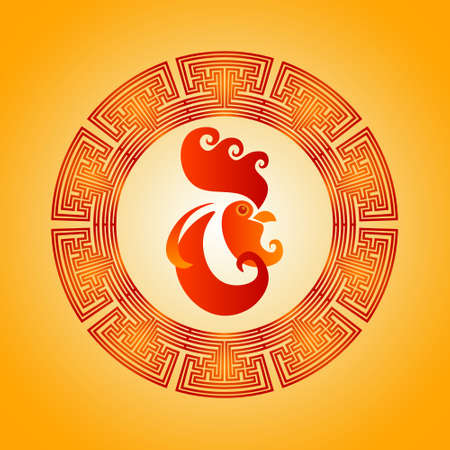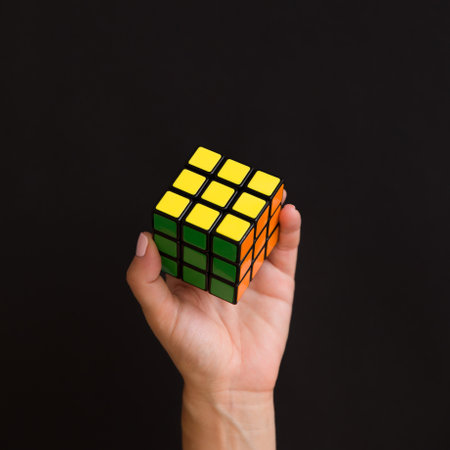The Symbolic Palette: Historic Roots of Colour Superstitions in England
Step into the misty lanes of an English village at dusk, and you might notice how colours seem to shimmer with quiet meaning. In traditional English culture, colours have always spoken a secret language—one woven from superstition, history, and the everyday hopes of generations. The origins of these beliefs stretch back through medieval times, when dye was dear and pigments precious, casting each hue with an aura of power and portent. Red, for instance, was more than a bold flourish; it was thought to ward off evil spirits, protect against witches, and bring luck to newborns swaddled in crimson cloth. Green, the colour of lush fields and ancient forests, carried dual meanings: prosperity for some, but for many a harbinger of misfortune if worn at weddings—a superstition whispered since the Tudor era.
As centuries rolled by and England entered the Victorian age, these symbolic shades only deepened their hold on daily life. Black became inseparable from mourning rituals, its sombre presence guiding families through grief while marking boundaries between worlds seen and unseen. Blue signified loyalty and calm—a trusted colour for everything from front doors to ribbons at village fêtes. Even yellow’s cheerful brightness could not escape suspicion; in some corners it hinted at jealousy or deceit. Every household wove these hues into decisions both grand and small: which dress to wear for a job interview, what colour ribbons to tie round a child’s cradle, or which flowers to leave on a loved one’s grave.
This tapestry of colour superstitions reflects not only the English weather—ever-shifting between rainclouds and sunlight—but also the nation’s enduring belief that fate can be nudged by thoughtful choices. To this day, echoes of these old meanings linger in folk sayings and rituals, reminding us that in England’s storybook landscape, every shade carries the weight of centuries past and dreams yet to come.
2. A Journey Through the Rainbow: Interpreting Common English Colour Superstitions
Step into the winding lanes of the English countryside, where tradition and superstition mingle beneath skies painted with ever-changing hues. For generations, colours have been more than just a visual delight in England—they are woven with meaning, whispered in local sayings, and guarded as omens or blessings. Let us journey through the most iconic shades—blue, green, black, and white—to reveal their mystical roles in English folklore and everyday life.
The Power of Blue: Protection and Peace
Blue, the colour of serene lakes and the endless sky, is often seen as a guardian shade. In English homes, especially in rural settings, people would hang blue glass beads or paint front doors blue to ward off evil spirits—a practice thought to invite calm and tranquillity. Sailors, too, were known to wear blue ribbons for safe passage across unpredictable seas, believing the colour could shield them from storms both literal and spiritual.
The Enigma of Green: Luck and Liminality
Green is a double-edged sword in traditional English lore. Revered as the hue of nature’s abundance, it symbolises fertility and new beginnings. However, superstition warns against wearing too much green at weddings or festive gatherings; “green gowns” were once associated with misfortune or even fairy abductions. The countryside saying goes: “Marry in green, ashamed to be seen.” Thus, green embodies both blessing and risk—a liminal threshold between fortune and peril.
The Mystery of Black: Mourning and Magic
Black is steeped in solemnity within English culture. While universally recognised as the colour of mourning—worn at funerals as a sign of respect—it also holds power in magical traditions. Village wise-women sometimes donned black garments to command authority or connect with ancestral wisdom. Yet black cats are famously ambiguous; while some see them as harbingers of bad luck if they cross your path from left to right, others believe they bring prosperity if they come unbidden to your doorstep.
The Purity of White: Innocence and Ghostly Warnings
White gleams with innocence and purity—think wedding veils and Christening gowns. Yet it also carries a spectral edge. Tales abound of ghostly apparitions clothed in white; to encounter one on a misty lane was said to foretell imminent change or even death. The phrase “as pale as a ghost” reflects this lingering sense of unease behind the colour’s apparent simplicity.
English Colour Superstitions at a Glance
| Colour | Cultural Meaning | Common Saying or Belief |
|---|---|---|
| Blue | Protection, Calm | Blue doors keep out evil spirits |
| Green | Fertility, Risk | “Marry in green, ashamed to be seen” |
| Black | Mourning, Magic | Black cats can bring luck—or misfortune |
| White | Purity, Ghosts | Sightings of women in white foretell change |
A Living Palette of Stories
Through these colours, we glimpse how English people found meaning in every shade—interpreting omens in daily life and honouring traditions that still echo through contemporary conversations. Whether painting a door blue for peace or avoiding green on a wedding day, each choice is a brushstroke on the canvas of cultural memory.

3. Red Doors and White Weddings: Everyday Colour Customs in British Life
Step into any quaint English village or bustling city street, and you’ll notice vibrant hints of tradition woven into the very fabric of daily life—often revealed through colour. In the heart of British culture, colours have long dictated not only personal style but also sacred rituals and the energy of domestic spaces. Perhaps nothing is more iconic than a bold red front door. Rooted in centuries-old superstition, painting your front door red is believed to welcome good fortune, offer protection against evil spirits, and signal a warm refuge to weary travellers. The colour red pulses with vitality, echoing tales of hearth fires and ancestral guardianship—a reminder that every threshold holds its own magic.
On the other hand, when it comes to tying the knot, white reigns supreme in the British imagination. The tradition of brides donning white gowns is relatively modern, popularised by Queen Victoria in the 19th century. Yet over time, this simple shade has become imbued with layers of meaning: innocence, hope, and a fresh beginning. The crisp white dress sets the stage for an auspicious union, with every embroidered detail whispering promises of luck and happiness. Guests often wear subdued tones so as not to overshadow the bride’s luminous presence, reflecting an unspoken reverence for these cultural codes.
Within these customs lies a profound respect for colour as more than mere decoration—it is a silent language that shapes experiences and expectations. Whether passing beneath a ruby-red lintel or watching vows exchanged under a fluttering veil, one can sense the currents of old beliefs flowing quietly alongside contemporary life. The choices we make in colour are never accidental; they are echoes of tradition and invitations for blessings yet to unfold.
4. A Feng Shui Perspective: Adapting Ancient Chinese Colour Wisdom in the UK
Across Britain, homes and businesses are experiencing a subtle yet profound transformation as the colourful world of feng shui enters the cultural landscape. While traditional English superstitions have long guided choices about colour—think of the caution surrounding green in weddings or the association of black with mourning—the principles of feng shui offer a fresh yet strangely resonant perspective. The ancient Chinese system doesn’t just dictate aesthetics; it weaves an intricate tapestry where colour channels energy (chi), influences mood, and even shapes fortune.
In many British interiors, this cross-cultural conversation is visible in the growing popularity of certain hues and their placement. Where once red might have been reserved for festive occasions or warnings, it’s now chosen for front doors to invite prosperity, echoing both old English beliefs and Chinese auspiciousness. Blue, revered in England for its calming effect and ties to nobility, aligns seamlessly with feng shui’s use of water tones to foster tranquillity and flow.
Connecting English Superstitions and Feng Shui Principles
The following table illustrates how some traditional English colour superstitions find new life when interpreted through feng shui wisdom:
| Colour | English Superstition | Feng Shui Principle | Modern UK Application |
|---|---|---|---|
| Red | Lucky at celebrations; wards off evil | Symbolises wealth, joy, protection | Red front doors for luck; accents in shops for prosperity |
| Green | Unlucky at weddings; linked to fairies | Growth, healing, balance | Used in living spaces for harmony and renewal |
| Blue | Nobility, calm, truthfulness | Peace, communication, flow | Bedrooms and offices for serenity and productivity |
| Black | Mourning; formality and power | Mystery, depth, protection (used sparingly) | Door trims or study nooks for focus and grounding |
| White | Purity; sometimes associated with death (funerals) | Clarity, new beginnings, cleanliness | Kitchens and bathrooms for freshness and clarity |
A Harmonious Blend: Local Sensibilities Meet Global Wisdom
This emerging blend isn’t about replacing one set of beliefs with another but creating a uniquely British approach to energy and space. In leafy London terraces or bustling Manchester cafés, you’ll notice a gentle layering of meanings—a jade-green sofa chosen not just for style but for its soothing potential; a bold red wall inviting not only admiration but also abundance. Through these choices, British residents tap into the ancient Chinese understanding that colour is more than decoration: it’s a living force shaping our daily experience.
5. Contrasts and Crossroads: When British and Feng Shui Colour Meanings Collide
Picture an English countryside wedding: the lush green of rolling fields, bridesmaids in delicate sage dresses, and a sense of timeless tradition. Yet, beneath the surface, there lingers an age-old superstition—green is considered unlucky for brides in traditional English folklore. This belief whispers through generations, carrying tales of misfortune for those daring to don the colour on their big day. Now, imagine introducing the wisdom of feng shui into this very scene, where green symbolises renewal, harmony, and vibrant life—a fortunate choice that channels positive energy.
Such cultural crossroads are not mere curiosities; they are real-life dilemmas faced by modern Britons navigating multicultural influences. Take the case of Emily and Wei, a London-based couple planning a fusion wedding. Emily’s grandmother cautions against any green accents, referencing “Married in green, ashamed to be seen,” while Wei’s family gently suggests jade and emerald tones to bless the union with prosperity and peace. Their journey becomes a tapestry of negotiation—balancing ancestral fears with aspirations for good fortune.
Another example unfolds in home décor. A British homeowner might shy away from painting the living room yellow, wary of its association with jealousy or deceit in local lore. Yet, a feng shui consultant may recommend golden hues to invite wealth and vitality. These moments of collision often prompt creative solutions—perhaps a muted olive accent wall or golden cushions that nod respectfully to both traditions without fully embracing or rejecting either.
Navigating these mixed messages is rarely straightforward. It involves listening deeply to family elders, researching ancient texts, and sometimes inventing new rituals altogether. Some choose compromise: a bride may tuck a sprig of green into her bouquet instead of wearing it; a homeowner might reserve auspicious colours for hidden corners or private spaces.
Ultimately, these contrasts become opportunities for dialogue and self-discovery. They invite us to question what we inherit and what we wish to create anew. In the heart of every colour conflict lies a story—a bridge between worlds—that enriches both British tradition and feng shui practice.
6. Modern Interpretations: The Shifting Power and Perception of Colour
Wandering through the bustling streets of modern Britain, one can sense the vibrant tapestry of colours woven into daily life—a far cry from the rigid superstitions of old. Today, colour has become an emblem of personal expression and wellbeing, its meanings shaped as much by individual experience as by inherited tradition. No longer confined to warding off misfortune or attracting luck in the manner of ancient English folk or Feng Shui practitioners, Britons now infuse colour into their lives with both intention and intuition, drawing from a wellspring of cultural memory and contemporary sensibility.
In homes across the country, you’ll find front doors painted bold red for a touch of luck or a dash of personality, while inside, living rooms are adorned with calming greens or cheerful yellows—chosen not merely for historical significance but for the mood they inspire. Offices in London’s creative quarters pulse with pops of orange and blue, reflecting a belief in colour’s ability to foster innovation and focus, echoing both modern psychology and subtle nods to age-old wisdom.
Fashion, too, becomes an act of storytelling. Young Britons may don emerald jumpers on important days, half-aware that green once symbolised new beginnings and prosperity. During exam season or job interviews, some reach for lucky charms or wear specific hues—perhaps a navy suit for calm authority or a splash of yellow for confidence—blending ancestral superstition with present-day pragmatism.
Even celebrations have evolved: weddings might still honour the “something blue” tradition for fidelity, yet brides now freely choose blush pinks or even deep purples for their bouquets, trusting both their instincts and Instagram trends. Festivals like Holi or Pride see communities awash with every shade imaginable, colour used joyously to signal unity, freedom, and hope.
This creative blend of tradition and contemporary belief is not accidental—it is an ongoing dialogue between past and present. Modern Britons are not discarding the old stories; rather, they are reimagining them. Whether using colour to craft a sanctuary at home, assert identity in public spaces, or simply attract a bit more good fortune on a grey Monday morning, people here continue to honour the unseen power of hue. In this way, the language of colour remains alive and evolving—a shimmering thread connecting centuries of superstition to the bright canvas of today’s British life.


